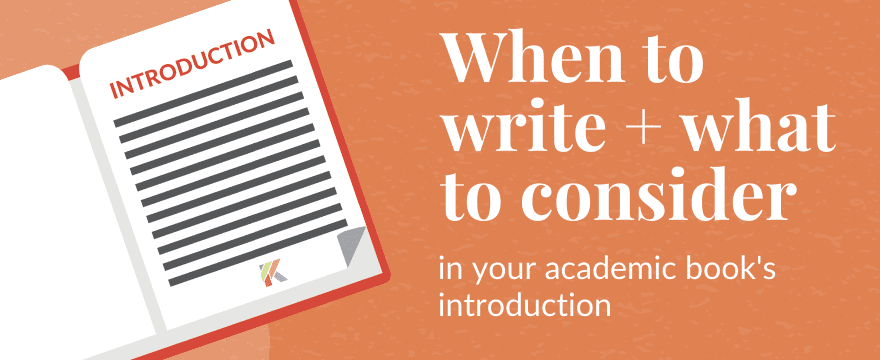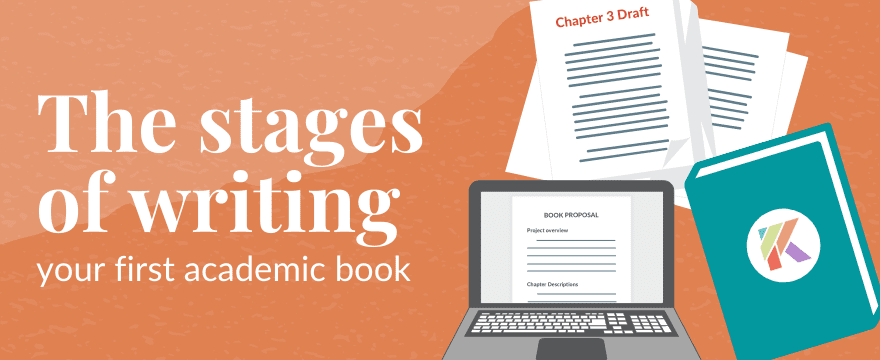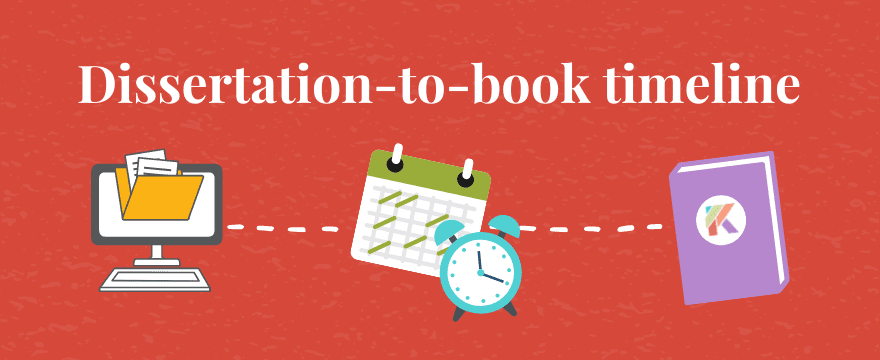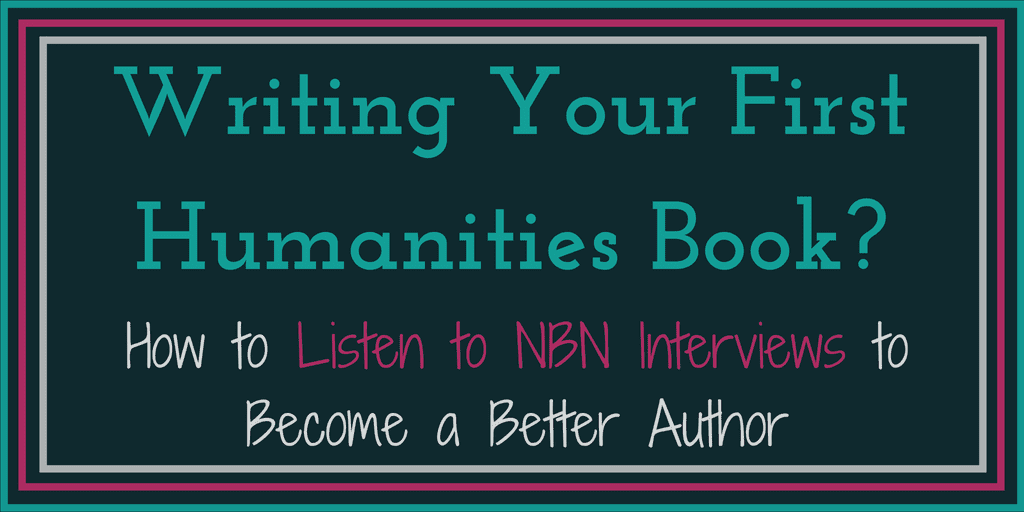The introduction to an academic book is critical, but it’s tricky to write. Authors sometimes assume that they must write the introduction first to help them distill the project’s priorities and sketch out a roadmap for the chapters. Others prefer to save the introduction for last so that it accurately reflects what their book actually does (I fall into this camp). Still others want to work as efficiently as possible or worry that working on the introduction will cause them to stall. So, when’s the ideal time to write your book introduction?
The answer?
There’s no one “right” time.
Instead, there are three main points at which you might choose to write your book’s introduction:
- first thing (before you revise your chapters)
- at the proposal stage (or just before)
- at the very end
Each has its advantages and disadvantages.
Whether you’re just starting out and wondering where to put the book introduction in your broad book plan or you think now might be the right time to work on your introduction but want reassurance, this post will help you decide when might be right for you, specifically.
Writing Your Book Introduction First
Some authors turn to writing their book’s introduction before revising any of their chapters to help them set their broad plan.
Advantages
Writing your introduction early can help you see the bigger picture and remind yourself of each chapter’s priorities before you spend dozens or hundreds of hours perfecting them. Doing so also means you will have a recognizable document you can send to friendly interlocutors to solicit feedback on the project as a whole.
Disadvantages
There are several disadvantages to writing your book introduction first. In my view, the book introduction is similar to the proposal–it asks you to capture what your book actually does (or will do). So, while it can be the right tool for capturing work you’ve already done to systematically rethink your project, in my view, it’s not the right tool for the actual rethinking itself. (See what I think you should be doing instead to revisit your book project’s higher-order concerns.)
Second, because the introduction often contains at least some theoretical background or contextualizing information, you might get stuck reading or drafting those pieces at a point when you really need to be distilling your claims on their own terms.
Finally, authors who write the introduction early typically need to majorly revise it several times over the course of completing their book. Consequently, writing the introduction first (especially aiming to produce a polished introduction) can be inefficient.
Recommendations
I highly recommend that you work on your book (or use The Dissertation-to-Book Workbook) before writing your introduction. Then, if you so choose, you can write a draft introduction to help you capture your updated understanding of the project.
To avoid wasting time drafting and polishing sections that will necessarily change as you draft and revise your individual chapters, focus primarily on producing a messy draft outlining your book’s main claims and chapter roadmap. In my view, trying to write an introduction that conforms to your field’s norms (which will necessarily involve deconstructing model books) is likely counterproductive at this stage.
Writing Your Book Introduction Simultaneously with the Proposal (or, after Revising Two Chapters)
Advantages
There are three main advantages to writing your book’s introduction and your book proposal around the same time. First, though their structure and format differ, these two documents are similar in mode.
Second, some presses require an introduction as part of a book proposal package. So, if you plan to write and submit book proposals before the entire manuscript is ready (learn about the advantages and disadvantages to this strategy and to waiting) and your press requires an introduction, then working on these documents simultaneously will not only ensure you have a complete proposal submission package, but can help you take advantage of their complementary approaches.
Finally, if you wait to draft the book introduction until this point (instead of writing it first), you likely have a reasonable understanding of what claims you will actually be able to support in several of your chapters, given the evidence you have. Consequently, you will be less likely to write an introduction that sounds good, but is divorced from the claims you can actually support.
Disadvantages
There are two main disadvantages of writing your introduction at this point. First, the pieces about the chapters you still have yet to write (or revise) will be, as a dear colleague puts it, “speculative fiction.” Secondly, and relatedly, you will likely need to update the book introduction after completing the entire manuscript so that it captures the final claims.
Recommendations
If your press requires (or recommends) an introduction as part of your book proposal package and you want to submit proposals before the full manuscript is ready, you should likely draft it at this point. Do take the time to deconstruct and analyze the introductions of model books, and do aim to produce a polished draft.
If, by contrast, you will not submit your book introduction as part of your book proposal package, but you want to write the introduction at this point, I would treat it as a draft and follow the recommendations outlined in this post’s first section.
After You’ve Finished the Entire Manuscript
Advantages
There are two interrelated advantages to saving the book introduction for last. First, having already completed the entire manuscript, your book introduction will no longer be a work of speculative fiction. Instead, you will be able to capture, with certainty, what the manuscript (and its chapters) does. Secondly, and relatedly, you will not need to majorly revise the introduction each time your project evolves. As a result, you could potentially save yourself dozens of hours.
Disadvantages
While I tend to prefer to save introductions (whether of articles or books) for last, there are nevertheless several distinct disadvantages do doing so. First, if you did not work on your book earlier, you might feel a constant sense of being unmoored as you’re working in your individual chapters.
Second, a book introduction is a recognizable document you can send to friendly interlocutors to get feedback on the project as a whole. Saving the introduction until the book is finished means you will need to use other (potentially less outwardly recognizable) documents like a book narrative, a book abstract, or a project description to get feedback on your book project’s conception.
Recommendations
If you tend to prefer to write your introductions last (I do!), you can certainly take this approach with your academic book. Since, presumably, you will be close to submitting the book for peer review, you should aim to produce a polished draft. Before writing the introduction, I highly recommend that you deconstruct (reverse outline) and analyze the introductions of several model books.



